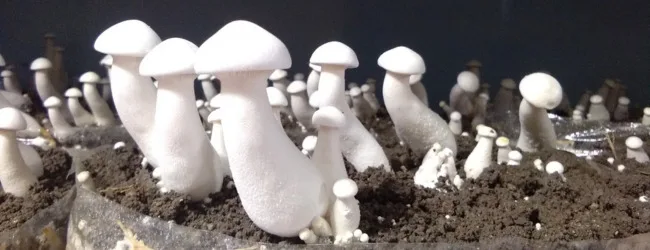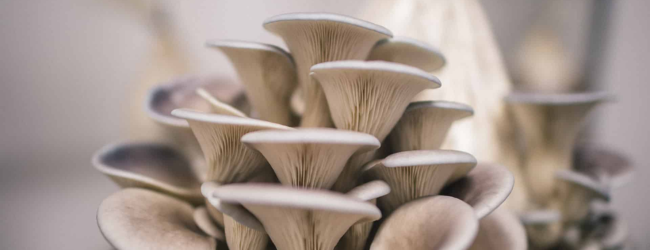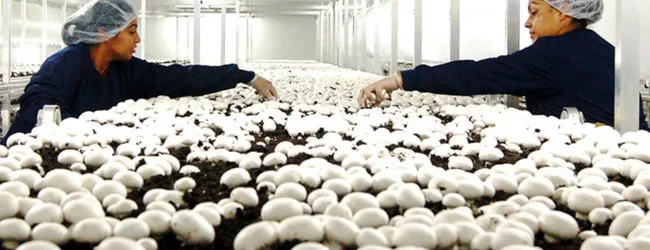Table of contents
- What is Indoor Mushroom Farming?
- Why Choose Indoor Mushroom Farming in India?
- Setup Requirements for Indoor Mushroom Farming
- Best Mushroom Types for Indoor Farming in India
- Cost Breakdown of Indoor Mushroom Farming (2025)
- Step-by-Step Process of Indoor Mushroom Farming
- Profit Potential in Indoor Mushroom Farming
- Tips to Maximise Success
- Government Support & Training Programs
- Pros & Cons of Indoor Mushroom Farming
- Conclusion
- Frequently Asked Questions (FAQs)
Indoor mushroom farming is rapidly becoming one of the most profitable agri-businesses in India, thanks to low investment, quick returns, and year-round production. Whether you’re a beginner, an urban farmer, or a seasoned agri-entrepreneur, this step-by-step guide will help you understand how to start and succeed in indoor mushroom cultivation in India by 2025.
What is Indoor Mushroom Farming?

Indoor mushroom farming is the practice of growing mushrooms in controlled environments such as grow rooms, containers, or greenhouses using artificial lighting, humidity, and temperature control systems. It eliminates dependence on external weather and increases yield predictability.
Why Choose Indoor Mushroom Farming in India?
Here’s why indoor mushroom farming is booming:
- ✅ Low Startup Cost: Start with as little as ₹50,000.
- ✅ Quick Harvest: Grow in 25–35 days.
- ✅ High Demand: Mushroom consumption in India is increasing by 12% CAGR.
- ✅ Urban-Friendly: Grow in basements, sheds, or even spare rooms.
- ✅ Scalable: Start small and expand easily.
Setup Requirements for Indoor Mushroom Farming
| Component | Requirement |
|---|---|
| Space | 100–500 sq. ft. (can start in a room) |
| Temperature Control | 20–28°C (depending on mushroom type) |
| Humidity Control | 80–90% (use humidifier/mist systems) |
| Lighting | Low-intensity artificial light (LED/CFL) |
| Ventilation | Proper air circulation, fans, or exhausts |
| Substrate Materials | Wheat straw, paddy straw, sawdust, or composted materials |
| Spawn | Mushroom seeds/spawn bought from certified suppliers |
| Racks/Trays/Bags | Wooden/metal racks or plastic bags, depending on the method |
| Water Source | Wooden/metal racks or plastic bags, depending on method |
Best Mushroom Types for Indoor Farming in India
| Mushroom Type | Ideal for Beginners? | Temperature Needed | Days to Harvest |
|---|---|---|---|
| Button Mushroom | ✅ Yes | 16–22°C | 30–35 days |
| Oyster Mushroom | ✅ Yes | 20–30°C | 20–25 days |
| Shiitake Mushroom | ❌ Slightly Complex | 12–24°C | 45–60 days |
| Milky Mushroom | ✅ Summer Variety | 25–35°C | 40–45 days |
💡 Pro Tip: If you want to start a Business but have too many doubts, connect with a Business expert from Boss Wallah for guidance – Check Out
Cost Breakdown of Indoor Mushroom Farming (2025)
| Item | Approximate Cost (₹) |
|---|---|
| Grow Room Setup (100 sq. ft.) | ₹20,000 – ₹25,000 |
| Shelves, Racks, Trays | ₹5,000 – ₹10,000 |
| Temperature & Humidity Controls | ₹10,000 – ₹15,000 |
| Mushroom Spawn (per cycle) | ₹3,000 – ₹5,000 |
| Substrate & Bags | ₹2,000 – ₹3,000 |
| Miscellaneous (electricity, etc.) | ₹3,000 |
| Total Setup Cost | ₹45,000 – ₹60,000 |
➡️ Pro Tip: You can break even in just 2–3 production cycles!
ALSO READ | Mushroom Farming Loan and Subsidy: Top 10 Loans to Launch Your Business
Step-by-Step Process of Indoor Mushroom Farming

Step 1: Choose Mushroom Variety
Start with oyster or button mushrooms. They’re beginner-friendly and highly profitable.
Step 2: Set Up the Grow Room
Install ventilation, humidity, light, and temperature systems. Use wooden racks or vertical trays for space optimisation.
Step 3: Prepare the Substrate
Sterilise materials like straw or sawdust, mix with water, and pack into bags or trays.
Step 4: Inoculate with Spawn
Mix mushroom spawn with substrate and keep in dark, humid conditions for 10–15 days.
Step 5: Incubation & Fruiting
- Keep the temperature constant.
- Mist twice a day.
- Ensure good airflow.
Step 6: Harvesting
- Mushrooms are ready in 25–35 days.
- Harvest early morning for freshness.
Step 7: Packaging & Selling
- Use eco-friendly packaging.
- Sell to hotels, local markets, organic stores, or via online platforms.
Profit Potential in Indoor Mushroom Farming
| Parameter | Value (Per Cycle) |
|---|---|
| Production Capacity | 100–150 kg |
| Selling Price (avg) | ₹100–₹150 per kg |
| Revenue | ₹10,000 – ₹22,500 |
| Net Profit | ₹6,000 – ₹15,000 |
🔹 Annual Potential (6 cycles/year): ₹60,000 to ₹1.5 lakh (from 100 sq. ft.)
ALSO READ | Greenhouse Farming Cost in India (2025): Detailed Breakdown for Setup & Operations
Tips to Maximise Success
- 🔍 Always buy certified spawn.
- 💧 Maintain consistent humidity and hygiene.
- 🚫 Avoid overcrowding – leads to fungal contamination.
- 📦 Explore value-added products like mushroom pickle, powder, etc.
- 📱 Use social media or WhatsApp groups to find direct customers.
Government Support & Training Programs

- ICAR & KVKs (Krishi Vigyan Kendras) conduct free/low-cost training.
- NABARD offers subsidies & loans under agri-entrepreneurship schemes.
- State Horticulture Departments often provide spawn at subsidised rates.
Pros & Cons of Indoor Mushroom Farming
| Pros | Cons |
|---|---|
| Low investment, high returns | Needs continuous monitoring |
| Year-round production | Sensitive to contamination |
| Requires small space | Initial setup can be technical |
| Eco-friendly, organic produce | Limited shelf life (2–3 days fresh) |
Need Expert Guidance?
Starting a business can be challenging, but you don’t have to do it alone! At Boss Wallah, our 2,000+ business experts are ready to provide valuable insights and guidance. Whether you need help with marketing, finance, sourcing, or any other area of any business, our business experts are here to help you succeed
Confused about Which Business to Start?
Want to start your own business but unsure which one to choose? Explore Boss Wallah, where you’ll find 500+ courses by successful business owners, featuring practical, step-by-step guides on starting and growing various businesses.
Find your perfect business idea today
Conclusion
Indoor mushroom farming in India is an affordable, sustainable, and highly scalable business opportunity. With just a small investment, basic training, and a controlled setup, anyone can earn consistent profits from this venture. In a world moving towards urban farming and organic living, now is the perfect time to grow mushrooms indoors!
Frequently Asked Questions (FAQs)
Oyster and button mushrooms are best for beginners due to their ease of cultivation and high demand.
You can start in as little as 100 sq. ft., even in a spare room or basement.
Typically, 25–35 days from inoculation to harvest.
Yes, especially with oyster and button mushrooms; ROI can be 100%+ in a few months.
For small-scale farms, no license is needed. For large-scale commercial sales, FSSAI registration may be required.
From ICAR-certified labs, Krishi Vigyan Kendras (KVKs), or private certified vendors.
Fresh mushrooms last 2–3 days at room temperature and up to a week when refrigerated.
Yes, they grow in dark or low-light environments. Use artificial light if needed.
Yes. NABARD and state horticulture departments offer schemes, loans, and training.
Absolutely. Indoor setups are ideal for urban locations with limited space.


